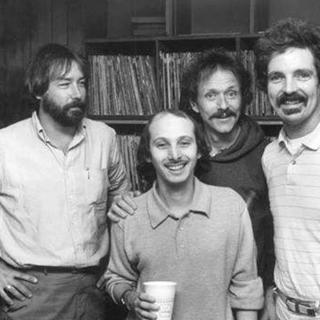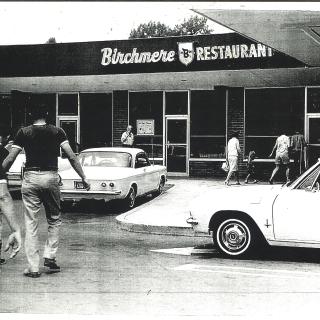WHFS: Washington’s Godfather of Progressive Rock
It may be hard to imagine or even remember, but there was a time when terrestrial radio held great sway over the nation’s music listening habits. Radio stations and disc jockeys could influence what you listened to, what you liked, and where you could find it.
In most cases, the songs played were determined by program directors, who in turn took their orders from station executives and owners who were looking to draw audiences, get sponsors to buy airtime, and make money. Record companies sought out stations to get their bands played on the radio so that people could hear a song, fall in love with it, then go out and buy the whole album.[1]
This system meant that radio play could be instrumental to a band’s success, and on a larger scale could even boost an entire genre or style of music. This is precisely what happened in the 1960s, 70s, and 80s, when the D.C.-area FM station WHFS embraced a progressive rock format and became part of rock music history.
WHFS (Washington High Fidelity Stereo) began broadcasting on November 11, 1961 at 102.3 on the FM dial. It was the first FM station in the D.C. area, and its play format included classical during the day, jazz at night, and middle-of-the-road music, known in the industry as MOR.[2]
WHFS remained a small station with a daily audience of about 800 listeners until writer and ad salesman Jake Einstein came on the scene. In 1967, Einstein invested in the station and took on the role of general manager. He was desperate to find a way to improve the station’s fortunes.
“Then a guy named Frank Richards came in one day wearing cutoffs and a leather vest, played me a tape of rock music from Los Angeles,” Einstein told The Washington Post in 1983. "We were losing so much money that another couple of dollars couldn't hurt, right? So we put him on. My God, the calls! I never knew we had an audience!"[3]
Einstein also began opening up evenings to progressive music programming. Radio shows like “Electric Brew,” “Spiritus Cheese,” and “Through the Looking Glass” played music that wasn’t being aired on any other station in the area.
The station would continue playing MOR music during the day, but after 4 p.m., it would switch over to freeform DJs. Freeform meant that each DJ could program the music for their respective shows. This contrasted sharply with most radio stations at the time, where DJs were given a play list that was crafted in advance by program executives. Play lists were based on careful study of what songs were getting the most play combined with the demographics of the audience and sometimes even the input of station advertisers.
“I was allowed to play whatever I wanted to play and interview whoever I wanted to interview,” said WHFS DJ Cerphe Colwell, who was hired in 1970 to do a Saturday night show. “By today’s standards, it’s astonishing.”[4]
The unconventional changes paid off. By 1971, WHFS embraced a complete rock and roll format, with its DJs all playing their shows freeform. It was a common site for employees to bring crates of records from their personal collections to the station to be played on the air.
WHFS’s motto was “Feast your ears.” And a growing audience did just that. The nightly average grew to 32,000 listeners and the station gained a reputation for playing an eclectic and maybe even outlandish collection of music.
“There were no restrictions,” said Jonathan Gilbert, who was the longest-serving DJ during WHFS’s heyday, broadcasting under the name Weasel. “We would play everything from Stockhausen to bluegrass – sometimes in the same set.”[5]
From the late 60s to the early 80s, listeners could tune in and hear anything from the Flying Burrito Brothers to Little Feat, the Grateful Dead, Bonnie Raitt, Cab Calloway, Robert Johnson, Emmylou Harris, Elvis Costello, the Clash, Jesse Winchester, and more. WHFS was also the first D.C.-area station to play REM, U2, Simple Minds, and Depeche Mode.
WHFS hovered around the middle of the pack when it came to total listeners among D.C. area radio stations, but its audience was fiercely loyal. Bands making a swing through the Washington area often made sure to stop by the WHFS studio to jam or at least talk shop on the air with the DJs. Doing so could earn them a much larger audience for any live gigs they played in town.
Einstein sold WHFS in 1983, much to the shock and horror of local listeners. Most of the DJs and the progressive rock format resurfaced at another station he purchased in Annapolis. The WHFS call letters would shift up and down the FM dial as the station would be bought and sold over the years, but it would never duplicate its heyday as the home of progressive rock and roll in Washington, D.C.
Footnotes
- ^ In 1960, the “Payola” scandal revealed that radio DJs were accepting bribes by record companies to play certain records more often, giving the perception that some songs were more popular than they really were, thereby artificially boosting record sales. http://www.modestoradiomuseum.org/payola.html
- ^ The Urban Dictionary defines middle-of-the-road as: “Music that is neither too edgy or too sleepy. Also described as “safe,” or “nonoffensive.”
- ^ Quoted in Matt Schudel, “Jake Einstein, 90; Took Area Radio From Pop to Rock,” Washington Post, September 16, 2007. http://www.washingtonpost.com/wp-dyn/content/article/2007/09/15/AR20070…
- ^ Quoted in Neal Augenstein, “Radio rewind: When WHFS was D.C.’s on-air hangout for cool people,” WTOP Radio, July 22, 2015. http://wtop.com/entertainment/2015/07/radio-rewind-when-whfs-was-d-c-s-…
- ^ Quoted in Schudel, Washington Post, September 16, 2007. http://www.washingtonpost.com/wp-dyn/content/article/2007/09/15/AR20070…





![Sketch of the mythical fuan by Pearson Scott Foresman. [Source: Wikipedia]](/sites/default/files/styles/crop_320x320/public/2023-10/Goatman_Wikipedia_Faun_2_%28PSF%29.png?h=64a074ff&itok=C9Qh-PE1)












